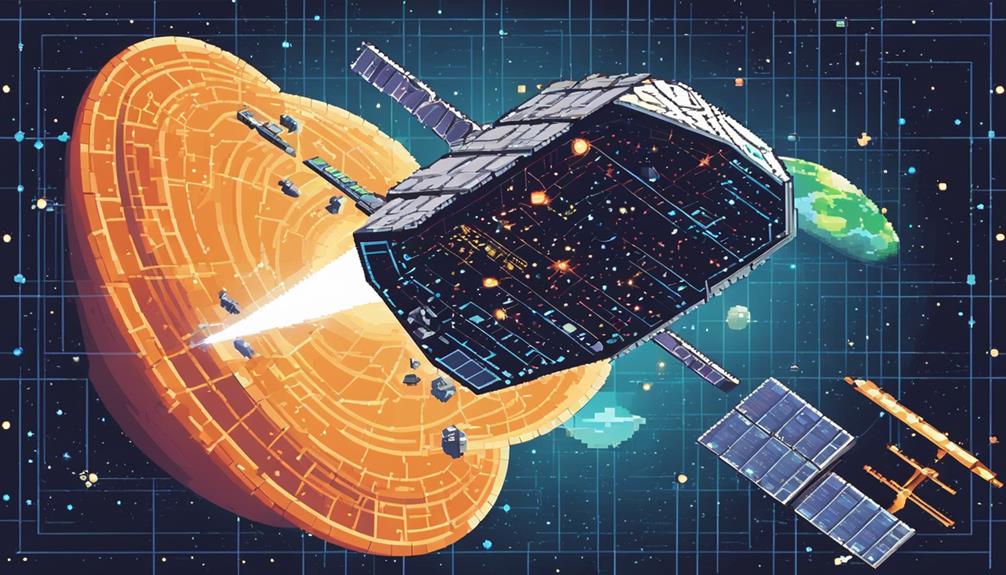Quantum technology's integration into satellite communications marks a significant leap forward in secure data transmission methodologies. By employing principles rooted in quantum mechanics, the field has unlocked a realm of possibilities for enhancing encryption efficiency and fostering the development of cutting-edge systems like quantum computing and AI within satellite networks. The implications of this technological convergence are vast, promising heightened security measures and groundbreaking advancements yet to be fully explored.
Key Takeaways
- Quantum technology ensures secure data transmission via Quantum Key Distribution (QKD).
- Unhackable communication channels are established, enhancing encryption efficiency.
- Quantum technology revolutionizes data transfer capabilities in satellite communications.
- Advanced quantum networks in space are made possible, paving the way for future advancements.
Quantum Technology Fundamentals
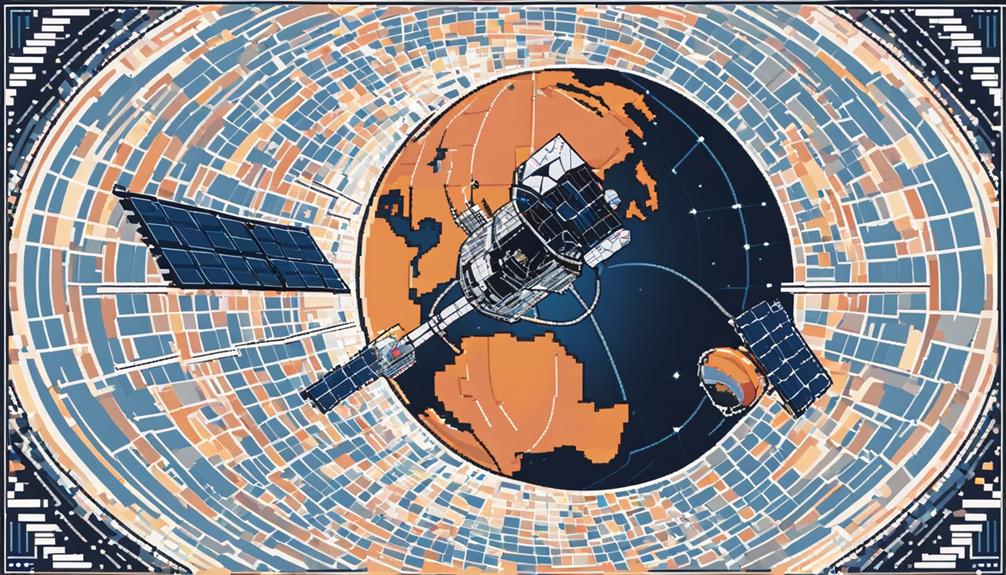
In the realm of satellite communications, a deep understanding of quantum technology fundamentals is essential for harnessing the power of qubits to revolutionize data transmission security and efficiency. Quantum communication relies on the principles of quantum mechanics to secure information exchange, with Quantum Key Distribution (QKD) playing a pivotal role. QKD enables the creation of secure encryption keys by leveraging the unique properties of quantum particles, ensuring that any attempt to intercept the key would disrupt the quantum state and be detected, thereby guaranteeing the security of the communication channel.
Quantum technology in satellite communications goes beyond traditional encryption methods by offering quantum-resistant encryption that is highly secure against hacking attempts. Quantum teleportation further enhances communication networks by facilitating the transfer of quantum states between particles without physical movement, enabling the establishment of secure channels over long distances in satellite systems.
Role of Quantum Technology in Satellites
Quantum technology plays a pivotal role in satellites by enabling secure data transmission through quantum key distribution (QKD). Equipped with this technology, satellites can establish unhackable communication channels over vast distances, enhancing encryption efficiency and data security for sensitive information. The integration of quantum technology in satellite communications not only revolutionizes data transfer capabilities but also paves the way for advanced quantum networks in space, ensuring secure communication in an increasingly interconnected world.
Enhanced Data Security
Utilizing cutting-edge quantum technology, satellite communications achieve enhanced data security through the implementation of advanced quantum key distribution (QKD) protocols. This secure quantum method leverages the principles of entanglement, ensuring that data transmitted via satellites is encrypted with utmost security measures. The role of QKD in satellite communications is crucial for establishing hack-proof encryption keys that cannot be intercepted or decoded by malicious actors. By harnessing the power of quantum mechanics, satellite networks can offer unprecedented levels of data security, safeguarding sensitive information from cyber threats. Quantum-enabled satellites provide a reliable platform for transmitting data securely, reducing vulnerabilities and ensuring the integrity of communication channels.
Key Points:
- Implementation of advanced quantum key distribution (QKD) protocols
- Utilization of entanglement for secure data transmission
- Ensuring hack-proof encryption methods
Improved Transmission Efficiency
With the integration of quantum technology in satellite systems, the enhancement of transmission efficiency becomes a critical aspect in optimizing data transfer processes. Quantum key distribution (QKD) plays a pivotal role in ensuring secure and efficient communication between ground stations and satellites. Utilizing entangled photon pairs for transmission significantly improves the speed and reliability of data transfer. Ground stations and satellites must be synchronized effectively to enable seamless quantum communication, reducing latency and enhancing overall transmission efficiency. The table below illustrates the importance of these factors in achieving enhanced transmission efficiency in satellite communications.
| Aspect | Description | Importance |
|---|---|---|
| Quantum Key Distribution (QKD) | Ensures secure data transfer | Critical for data security |
| Entangled Photon Pairs | Enhances speed and reliability | Improves transmission efficiency |
| Ground Stations and Satellites | Synchronization for effective communication | Reduces latency issues |
Quantum Key Distribution (QKD) Explained
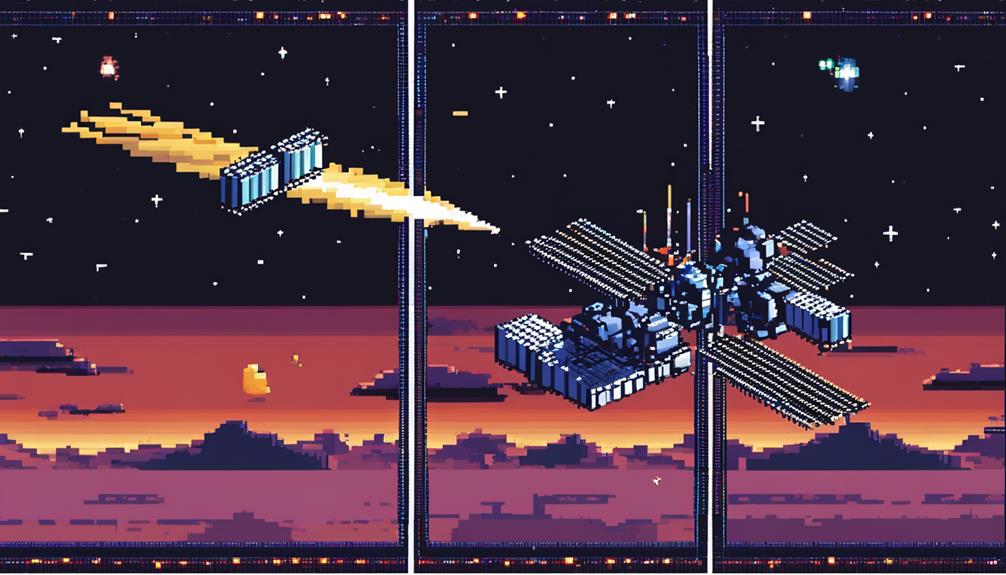
Employing the principles of quantum mechanics, Quantum Key Distribution (QKD) establishes a secure method for exchanging encryption keys in communication systems.
Key Points on Quantum Key Distribution (QKD):
- Enhanced Security: QKD utilizes quantum mechanics to ensure encryption keys are transmitted securely, offering a highly secure method for sharing cryptographic keys crucial for maintaining secure communication channels.
- Detection of Interception: Quantum key distribution prevents eavesdropping by enabling the detection of any interception attempts on the transmitted keys. This feature enhances the security of the communication channels by alerting users to any unauthorized access attempts.
- Foundation for Secure Data Transmission: As a key component of quantum communication systems, QKD provides a robust foundation for secure data transmission. By leveraging the unique properties of quantum mechanics, QKD offers a level of security that traditional encryption methods cannot match, making it an essential tool for ensuring the confidentiality and integrity of transmitted data.
Security Enhancements in Satellite Communications
Security in satellite communications is significantly strengthened through the implementation of quantum technology, ensuring robust encryption mechanisms that are immune to hacking attempts. Quantum key distribution (QKD) plays a vital role in enhancing the security of satellite communications by providing a hack-proof method of sharing encryption keys. Satellite-based quantum communication leverages the principles of quantum mechanics to achieve secure data transfer at the speed of light, safeguarding sensitive information during transmissions. This is made possible through the use of entangled photons, which form the basis of secure communication channels between satellites and ground stations.
The utilization of entangled photons in satellite communication systems enables fundamentally secure encryption key exchange processes, mitigating the risk of interception or decryption by malicious entities. Companies such as ID Quantique and QuintessenceLabs are at the forefront of offering advanced quantum encryption technology tailored for satellite communications, ensuring high levels of data protection for mission-critical operations. The ongoing development of a network of quantum-encryption-compatible satellites further enhances the security posture of satellite communication networks, fortifying them against potential cyber threats that seek to compromise data integrity and confidentiality. By integrating quantum technologies into satellite communications, organizations can maintain a secure and resilient communication infrastructure in an increasingly interconnected and digitized world.
Quantum Encryption in Space Communications

Quantum encryption technology in space communications leverages entangled photons to ensure secure and hack-proof data transmission. This cutting-edge approach revolutionizes the way data is protected during transmission in space-based communication systems. Here are three key points highlighting the significance of quantum encryption in space communications:
- Quantum Key Distribution (QKD): Quantum encryption in space leverages the principles of QKD to establish secure communication channels. By using quantum-mechanical phenomena to distribute cryptographic keys, QKD ensures that any interception or eavesdropping attempts are detectable, making communication secure and reliable.
- Entangled Photons: Entangled photons play a crucial role in quantum encryption for space communications. These photons are linked in such a way that the state of one instantly influences the state of the other, regardless of the distance separating them. This phenomenon enables the creation of unhackable encryption keys, ensuring the confidentiality and integrity of transmitted data.
- Secure Communication: The ultimate goal of quantum encryption in space communications is to achieve unparalleled levels of security. By harnessing the power of entangled photons and QKD protocols, satellite-based quantum encryption enables the establishment of secure communication links that are virtually impenetrable. This advancement paves the way for secure data transfer at the speed of light, making it a game-changer in the realm of space-based communication technologies.
Quantum Satellite Networks Overview
Utilizing entangled photons as a fundamental resource, modern satellite networks have revolutionized secure communication protocols within the realm of satellite technology. Quantum satellite networks leverage the phenomenon of entangled quantum particles to enable highly secure communication between satellites and ground stations. One of the key applications of these networks is quantum key distribution (QKD), which facilitates the exchange of encryption keys with unprecedented security.
Satellite-based quantum communication systems offer significant advantages over traditional optical fiber networks, particularly in terms of lower losses and enhanced security. By harnessing the principles of quantum mechanics, these networks play a crucial role in establishing secure and efficient data transfer mechanisms for various satellite applications.
The development of quantum satellite networks marks a significant advancement in the field of satellite communications, enhancing encryption methods, data security, and overall communication efficiency within satellite systems. By integrating quantum technologies into satellite networks, researchers and engineers are paving the way for a new era of secure and reliable satellite communication protocols. Quantum satellite networks are poised to redefine the landscape of satellite communications, offering unprecedented levels of security and data protection.
Quantum Technology for Secure Data Transmission
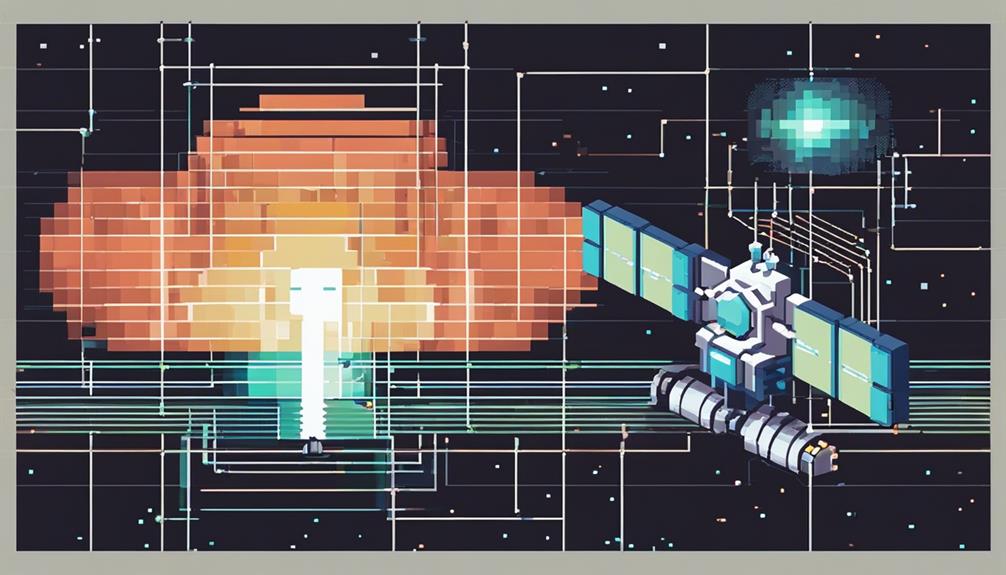
The integration of advanced quantum technologies in satellite communication systems facilitates highly secure and efficient data transmission mechanisms, ensuring the protection of sensitive information across global networks. Quantum technology offers innovative solutions for secure data transmission, with key features including:
- Quantum Key Distribution (QKD): Quantum key distribution enables the exchange of encryption keys securely in satellite networks. By leveraging the principles of quantum mechanics, QKD allows for the generation of cryptographic keys that are protected against eavesdropping attempts, enhancing the security of communication channels in satellite systems.
- Quantum Teleportation: Quantum teleportation is a phenomenon where quantum states can be transferred over long distances without physical movement. In satellite communication, this technology plays a crucial role in ensuring the integrity and confidentiality of transmitted data, enabling secure and instantaneous information transfer across vast distances.
- Quantum Communication: Quantum communication techniques enhance encryption and data transfer efficiency in satellite applications. By harnessing the unique properties of quantum mechanics, such as superposition and entanglement, quantum communication protocols enable robust and secure data transmission, safeguarding sensitive information exchanged through satellite networks.
These quantum technologies pave the way for a new era of secure data transmission in satellite communications, offering enhanced protection against cyber threats and ensuring the integrity of global communication networks.
Implementation of QKD in Satellites
The integration of Quantum Key Distribution (QKD) technology within satellite systems revolutionizes the security landscape of data transmission in space-based communications networks. By implementing QKD in satellites, secure communication channels are established through the exchange of encryption keys utilizing quantum principles. This advanced technology enables satellites to resist hacking attempts and eavesdropping activities, ensuring that data transmitted through satellite networks remains secure.
To further illustrate the significance of implementing QKD in satellites, the table below highlights key points regarding Quantum Key Distribution in satellite communications:
| Key Points | Description |
|---|---|
| Enhanced Security | QKD technology enhances data security in satellite communications networks. |
| Resistance to Hacking | Satellites equipped with QKD are resistant to hacking and interception. |
| Overcoming Vulnerabilities | QKD overcomes vulnerabilities of traditional encryption methods. |
| Advancement in Data Transmission | Implementing QKD in satellites advances secure data transmission in space. |
The utilization of QKD in satellites represents a critical step forward in safeguarding satellite communications against cyber threats and unauthorized interception. This innovative technology leverages quantum properties to establish secure communication channels, ensuring the confidentiality and integrity of data exchanged within satellite networks.
Benefits of Quantum Security in Space
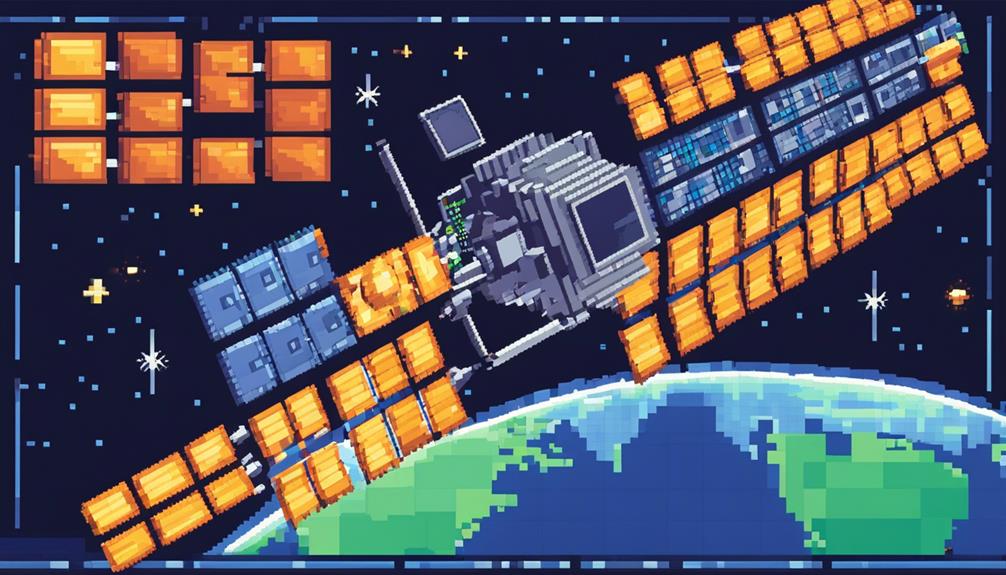
Quantum security in space harnesses cutting-edge quantum mechanics to fortify the integrity and confidentiality of data transmission within satellite communications networks. The benefits of quantum security in space are significant:
- Enhanced Encryption: Quantum technology enables more secure encryption key exchange through quantum key distribution (QKD) protocols. By utilizing the principles of quantum mechanics, QKD offers a higher level of security compared to classical cryptographic methods.
- Secure Data Transfer: Quantum teleportation, a key feature of quantum communication, allows for secure data transfer without the physical movement of information. This ensures that sensitive data remains protected during transmission in space environments.
- Global Data Distribution: Quantum satellite communication facilitates secure global data distribution, enabling reliable and secure communication channels for various applications. The Quantum Internet, powered by entangled photon sources in space, supports efficient and secure data exchange on a global scale.
Challenges in Quantum Satellite Communication
In quantum satellite communication, challenges such as security concerns, distance limitations, and interference risks pose significant obstacles to the development and implementation of efficient systems. Security concerns encompass issues like encryption vulnerability and potential interception threats. Overcoming distance limitations is crucial for establishing reliable long-range quantum communication links, while interference risks from external sources can disrupt signal integrity and compromise data transmission.
Security Concerns
Amid the advancements in satellite communication technologies, safeguarding encryption keys in quantum satellite communication encounters significant challenges. The security concerns in quantum satellite communication are:
- Quantum Key Distribution (QKD): Ensuring the secure distribution of encryption keys between satellites and ground stations is vital to prevent unauthorized access and maintain data confidentiality.
- Entanglement Distribution: Establishing and preserving entangled states between quantum systems across vast distances in satellite communication setups is crucial for enabling secure quantum communication protocols.
- Interception Risks: Potential interception of quantum signals during transmission poses a threat to the integrity of encryption keys, highlighting the need for robust security measures to mitigate such risks.
Distance Limitations
Addressing the challenges posed by distance limitations is essential for optimizing the efficiency and reliability of quantum satellite communication systems. Quantum satellite communication encounters obstacles such as losses in optical fibers and atmospheric interference, particularly affecting long-distance transmissions. To mitigate these issues, utilizing free-space optical channels through satellites proves advantageous due to lower losses compared to traditional optical fibers. Furthermore, maintaining precise clock synchronization between ground stations and satellites is critical for successful quantum communication over extended distances. Ensuring accurate clock synchronization between satellite telescopes and ground stations is imperative to overcome the distance constraints and enhance the effectiveness of quantum satellite communication systems. Background filtering and managing atmospheric conditions are also vital factors in achieving reliable communication over significant distances.
Interference Risks
Leveraging advanced error correction mechanisms is imperative to mitigate interference risks in quantum satellite communication systems. When dealing with atmospheric interference, maintaining entangled states becomes challenging, highlighting the importance of robust error correction techniques. The quality of quantum signals is susceptible to background noise and signal degradation caused by atmospheric conditions. To address these challenges, quantum error correction codes play a vital role in combating interference and ensuring reliable communication in satellite-based quantum systems. Strategies such as decoherence suppression and adaptive optics are actively employed to enhance the resilience of quantum signals against atmospheric disturbances. By implementing these measures, quantum satellite communication systems can effectively navigate interference risks and maintain the integrity of quantum information transmission.
Key Points:
- Advanced error correction mechanisms are crucial for mitigating interference risks.
- Atmospheric interference impacts the quality of quantum signals in satellite communication.
- Quantum error correction codes and strategic approaches are key in combating interference challenges.
Future Prospects of Quantum Technology
In anticipation of the continued evolution of quantum technology, the future prospects for satellite communications are poised to revolutionize link opportunities by extending satellite operations to daylight hours. Quantum technology holds the promise of enhancing satellite networks through various advancements. One key area for development is quantum teleportation experiments in moving frames, which will play a vital role in improving quantum space communication capabilities. Additionally, the creation of error-tolerant methods for transmitting quantum information is essential for the success of future quantum space communication applications.
To provide a clearer overview of the future prospects of quantum technology in satellite communications, the table below highlights some key points:
| Future Prospects of Quantum Technology |
|---|
| Extending satellite operations to daylight hours for increased link opportunities |
| Advancements in quantum teleportation experiments in moving frames for enhanced quantum space communication |
| Development of error-tolerant quantum information transmission methods for future applications |
| Utilizing high-orbit satellites to boost the capabilities of quantum communication in satellite networks |
High-orbit satellites, with their potential to significantly enhance quantum communication capabilities, are instrumental in advancing the field. Successful projects like Micius serve as inspiration for global research efforts aimed at establishing a comprehensive quantum network to elevate satellite communication to new heights.
Impact of Quantum Technology on Satellite Security
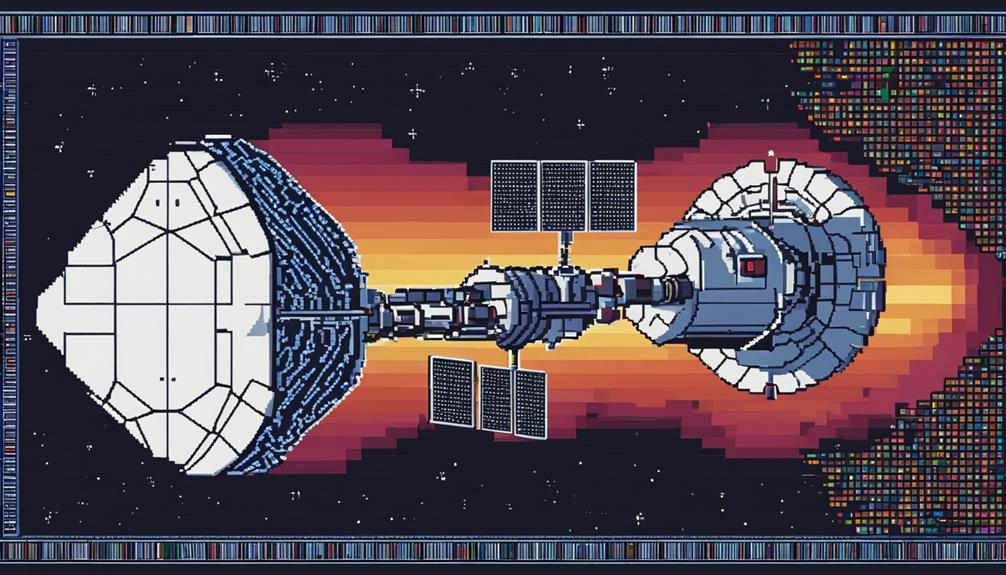
Enhancing satellite security, quantum technology introduces a paradigm shift by enabling fundamentally secure encryption key exchange through quantum key distribution (QKD). This advancement leverages the principles of quantum entanglement to establish secure communication channels between satellites and ground stations. The impact of quantum technology on satellite security is profound, as evidenced by:
- Quantum Key Distribution (QKD): Quantum technology enables the generation of encryption keys with an unprecedented level of security. By utilizing the principles of quantum mechanics, QKD ensures that any attempt to intercept or eavesdrop on the encryption key exchange would disrupt the quantum state, alerting the communicating parties to potential security breaches.
- Enhanced Data Protection: Quantum teleportation in satellite communication plays a crucial role in ensuring the integrity and confidentiality of sensitive data transmissions. By leveraging quantum entanglement, quantum communication technology in satellites provides a secure means of transferring information, safeguarding against unauthorized access and data breaches.
- Global Security Advancements: Quantum technology supports secure communication in satellite applications, mitigating vulnerabilities associated with traditional encryption methods. Through the implementation of quantum-resistant algorithms and protocols, quantum satellite communication contributes to the advancement of secure global data distribution and quantum sensing applications, reinforcing the overall security posture of satellite networks.
Frequently Asked Questions
What Is Quantum Communication Technology?
Quantum communication technology is a cutting-edge method that leverages quantum mechanics principles to ensure secure encryption and enhance network security. It involves quantum key distribution (QKD), a sophisticated technique for securely sharing cryptographic keys. By utilizing qubits in superposition states, quantum communication offers unparalleled security features that traditional encryption methods cannot match. This technology is revolutionizing data transmission by providing advanced levels of security and confidentiality through innovative quantum protocols.
What Is the World's First Quantum Communication Satellite?
In the realm of quantum communication, the pioneering Micius satellite launched by China in 2016 stands as a monumental achievement. This innovative satellite embodies the cutting-edge fusion of quantum technology and space innovation, enabling secure quantum communication through methods like quantum key distribution (QKD). Micius has significantly advanced the field by showcasing long-distance entanglement distribution and secure key distribution for various applications, setting the stage for further breakthroughs in satellite technology.
Which Country Has Quantum Communication?
Quantum communication is a cutting-edge technology that several countries have adopted. Utilizing quantum properties, it allows for secure networks with global reach. The encryption methods employed in quantum communication ensure data confidentiality and integrity. Countries such as China have made significant strides in this field, leveraging quantum technology to establish secure communication channels over long distances. Their advancements in quantum communication showcase leadership and innovation in secure data transmission.
Can China Communicate Through Quantum Entanglement?
China's advancements in quantum technology have enabled secure communication through quantum entanglement. Leveraging quantum entanglement, China has successfully transmitted quantum-encryption keys from space to ground stations, showcasing the feasibility of secure communication using this innovative approach. This achievement highlights China's pioneering efforts in utilizing quantum entanglement for secure communication, cementing its position as a leader in quantum technology applications.
